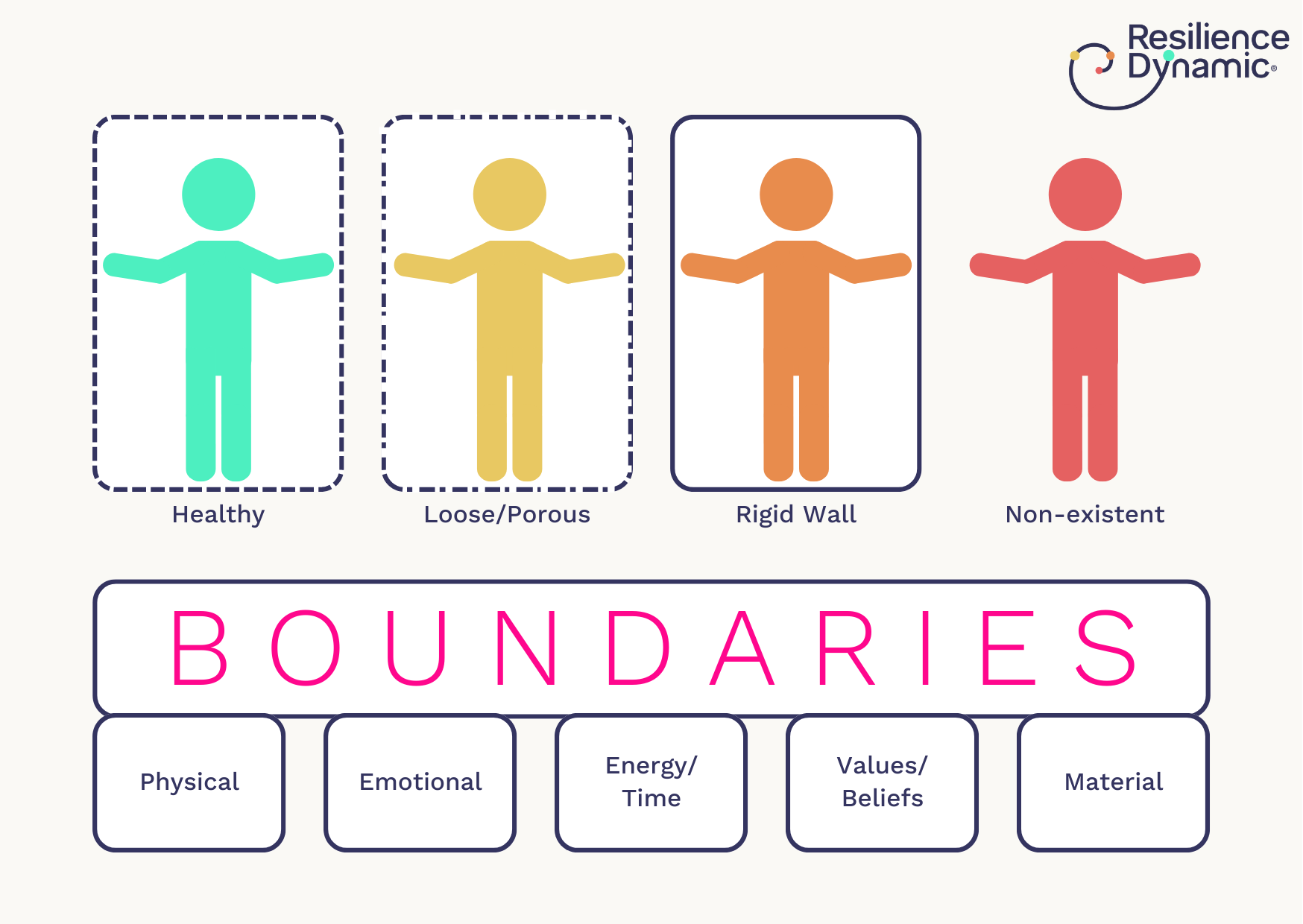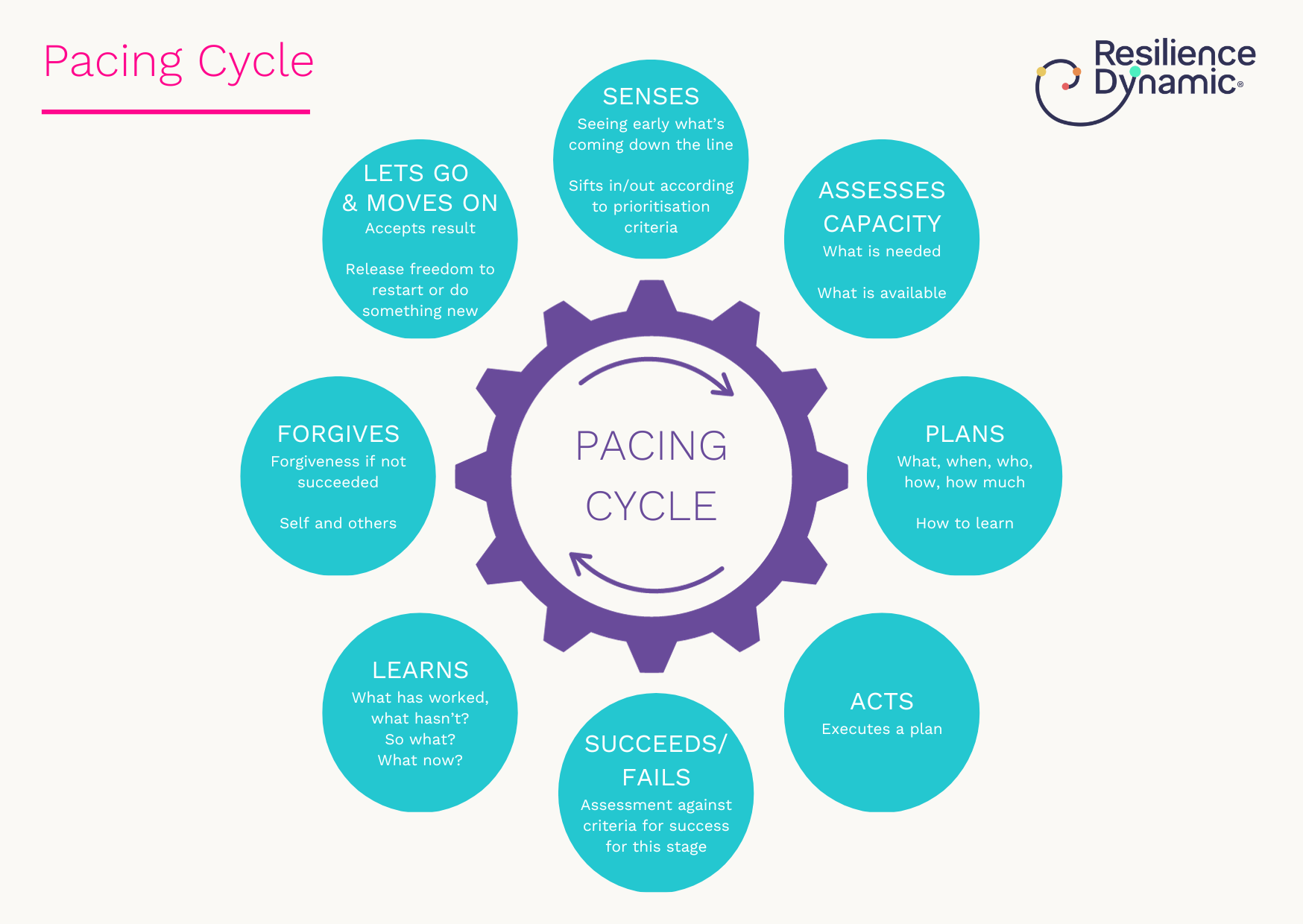Absorbing difficult emotions from team members is a creeping issue for leaders. To maintain their own resilience to lead well, they must embrace a balancing act between empathy and self-preservation using these 4 leadership practices.
1. The Problem: Leaders Find Themselves Burnout During Change
The Resilience Dynamic has been working with executives and senior teams for many years in our capacity as coaches and as advisors in how to achieve healthy, high performance. We have a concern that there is a creeping issue for leaders. It’s about the consequences of leaders absorbing difficult emotions from their team members.
We see leaders as sitting in the crossfire between driving change on behalf of the organisation whilst trying to temper and stabilise their people’s reactions to that change. Change is often externally driven and not in the gift of the leaders to alter or slow down. This includes restructuring, M&A activity, or sudden internal pivot of plans or processes as a reaction to severe disruption. The ask of the leader is to sort the integration of the change successfully without any ripple effect on productivity. It’s quite an ask, especially because disruption can create a volcano of emotional turbulence amongst staff.
The drive to absorb this emotional turbulence increased through Covid, and has continued with the ever increasing level of uncertainty in the business and wider world. It’s an especially difficult time for Gen Z who are reporting poorer mental health compared with older generations. On top of that, remote working has increased the risks to mental health and so is also contributing to the sense of emotional turbulence. Empathic leaders feel the need to support and protect their people.
The creeping issue for leaders is that too much absorption of negative or difficult emotions leads to exhaustion and even burnout in the leaders themselves. In order that leaders maintain their own resilience to lead well, especially in times of change or crisis, these 4 leadership practices help them to embrace a balancing act between empathy and self-preservation.

2. The Evidence: Emotional Turbulence On The Rise
Our work with Lee Hecht Harrison has given birth to a 4-stepped ‘Activation Framework’ for organisations to achieve healthy, high performance. In it, we synthesise the impact of burnout:
- $322Bn cost globally²
- 50% self-report as burnout across 253 countries
- 69% of C-suite executives are so stressed they are considering leaving⁴
- The impact of demand being greater than people’s felt capacity leads to a whopping 80% rise in stress and a drop of 33% in energy⁵
- Gen Z are 8% more likely to experience poor mental health than 55+s¹
- Remote working creates an acute issue where 69% of remote employees are experiencing burnout; 86% have experienced high levels of exhaustion⁶
We also look at the underlying causes of burnout caused by BANI (Brittle, Anxious, Non-linear, Incomprehensible). BANI is a useful framework that describes the human costs of operating in such a disruptive and complex world. It is the daughter of the term VUCA, the previous description of change created by the US Government to help shift mindsets from problem solving to handling issues as volatile, uncertain, complex and ambiguous, all needing the response of continued experimentation, learning and adjustment.
BANI, now really recognising the human element of all this complexity, highlights how full of illusions we are in the middle of this disruptive world:
- We believe that we have strength in our processes and methods, whilst these same processes cannot withstand the disruption of sudden, severe changes. The key is to build in adaptability into the foundations of the organisation. Via the workforce, via processes, via policy and via culture.
- We believe we are in control, and indeed should seek control. This in the middle of unpredictable situations which are not fully controllable. The job is not to seek control, but to build sufficient capacity to respond. This is about responding as appropriate – controlling what can be controlled and adapting when things are out of one’s control.
- We believe we can predict. Except, as above, things have become really non-linear and impossible to predict. Spending efforts on honing long term plans is now wasted effort, and instead should be spent ensuring three core capabilities across the organisation: clarity of intention and purpose (how that intention is activated), values by which we all operate, and capacity to deal with the unexpected.
- We believe we know, and that we need to build knowledge. The issue is however that action and consequences are now too complex to map simply, and even with the support of Big Data, we find it really difficult to know what the problem actually is and which solution to adopt. Experimentation, learning and the time for systemic reflection is all needed instead.
BANI we believe is a useful framework on why there is increased emotional turbulence, and why leaders are having to absorb such difficult emotions. The whole thing leads to workforce and leadership burnout, and that, of course, is extremely bad news for profitability.⁶
3. Root cause: The Three Drivers Behind Why Leaders ‘Over-Absorb’ The Emotions of Others
There are three primary drivers behind why leaders go into ‘absorb’ mode.
Feeling Overly Empathetic
Effective leaders are characterised by a high degree of empathy. It’s a necessary and brilliant capability, whereby leaders can genuinely care about their people, seeing the issues and challenges from the viewpoints of others, and working through how to ensure that workloads, performance management, culture and the overall demand are at the appropriate level to foster sustainable, healthy, high performance.
There is a downside however. Having empathy without being able to hold people to account ends up being a bit of a disaster. It’s too one-sided.
- With reference to tasks, the all-empathy leader will take on others’ responsibilities in order to protect or rescue them. The workload of the leader increases in order to lower the workload of their people. If there are several people, workload rises exponentially.
- With reference to stress, emotions and difficulties, the all-empathy leader will absorb the emotions of those experiencing stress, in order that their staff can let go of negative feelings, thereby reducing their resilience drain. The leader however is left with the emotional monkey on their back at the end of the day. Where do they put all that emotional discharge? The only solution is to absorb it inside.
The consequences of both activities above is that the leader is drained at the end of the day. This is accompanied by a drop in productivity. If the pattern continues across time, this leads to eventual exhaustion and burnout.
Feeling Overly Responsible
If leaders are driving the change, or have contributed to the design of the change that is causing team members lots of grief, the sense of responsibility can weigh heavily. ‘This is my doing, I must therefore absorb the negative fallout as much as possible’.
And so the leader goes out of their way alleviate, wipe furrowed brows, listen, be there. The leader will receive plenty of feedback about the change itself and may even alter the direction of travel in some way. Whilst any leader needs to listen to feedback and adjust to create the chance of higher success, some requests might undermine the change process. Adaptations need to remain coherent with the outcomes of the change itself, otherwise they create confusion and may drive a mediocre result.
Then there’s the emotional absorbing that the leaders is trying to do. It’s a similar consequence as our first driver above, with exhaustion and burnout, but these come much sooner in this scenario, due to the depth of emotional involvement of the leader.
Feeling The Pressure to Maintain Performance
Leaders feel it is their duty to maintain a positive and cohesive team environment. This is even more true in challenging times. The pressure can result in leaders absorbing emotions from different people in the team, including the moaners, the nay-sayers, the drama kings and queens, and the emotionally exhausted. All in an attempt to keep things on track and deliver against their performance measures.
In the Resilience Dynamic’s experience, so many leaders are attempting this right now. But if leaders are not able to stand back because they are over-busy or fatigued, they are vulnerable to a loss of perspective. How do they distinguish between the organisation’s responsibility versus that of the individual?
Ensuring peer group support to help address the latter is a vital mechanism. This does not diminish the leader’s responsibility to communicate the ‘why’ of the change, but it does provide a vehicle for people to share and express what they find difficult. It is extraordinary the impact of being listened to on a person’s sense of agency and emotional wellbeing. Peer group support is a super way to ensure the leader’s attend to the issues that fall under the organisation’s responsibilities, whilst ensuring that staff are successfully assimilating the change at minimum cost to their wellbeing.
4. The Solution: 4 Leadership Practices for Balancing Empathy and Self Preservation
The Resilience Dynamic’s research and practice highlights 4 main leadership practices to ensure you don’t give up on caring, whilst ensuring that you manage your own resilience and wellbeing. Empathy and Self Preservation, hand in hand!

Practice 1: Awareness
First and foremost is tuning in to how you actually feel. You need to be able to do this whenever, wherever you need it, in order to assess if you are operating within healthy thresholds.
We call the skill associated with this ‘Being Present’ and is it the bedrock of all resilience and wellbeing. There isn’t a quick fix way of building this, because it’s both a skill and a practice. If you are reading this and saying ‘yeh, yeh, I do this all the time’ but in fact you give yourself just moments to notice what’s going on for you, before racing back to the task again, this is not Being Present. It’s likely you hold an intention to be present but without really engaging in how to enable yourself to do so for real. Instead, you allow your distractions to overcome that moment of checking in. Being distracted, especially during times of stress or upheaval, is an issue for everyone:
…You are missing 50% of your life. And you’re not alone: Everyone is. I say this confidently, even without knowing who you are… Over the course of my career as a brain scientist, I’ve seen certain universal patterns in the way all of our brains function—both how powerfully they can focus, and how extraordinarily vulnerable they are to distraction—no matter who you are or what you do. I’ve had the opportunity to peek inside the living human brain, and I know that at any given moment, there’s a high probability that your mind just isn’t here….
Mental time travel is one of the biggest culprits degrading our attention. We do it all the time. We do it seamlessly. And we do it even more under stress.³
Adecco Group’s ‘Global Workforce of the Future’ 2022
Being Present in a moment – takes only a moment – once you have the capability embedded in your leadership practice. Fundamentally it’s about ensuring you have the quality of connection with yourself, and others, to really become aware of what is going on right now, no matter the distractions.
- Being present means you see clearly. You see what is actually happening, not what is imagined.
- Being Present helps you notice the limitations of your own abilities to see clearly, and helps you give yourself permission to ask for help – to see what others see in the situation.
- Being present means noticing what is going on for you, inside. That means noticing your somatic reactions, what is going on in your body. It means noticing your patterns of thought. It means noticing your assumptions.
- Being present means you don’t judge what’s going on.
- Being present means giving up ‘knowing’.
Being Present is the core enabler of being able to listen well to yourself and to others. It’s therefore a core skill within empathy itself. And for the sake of self-preservation, it is vital, because you notice where you are ‘beyond’ a healthy level of absorption of others’ emotions.
Practice 2: Setting Healthy Boundaries
Boundaries help you to define yourself, rather than allowing other people to define you.

A boundary is simply where on one side things are ok for you, but on the other side things are not OK. Boundaries keep you safe and healthy in any situation. An example of a boundary is that it’s unacceptable for a stranger to come too close to you. This is a physical boundary. Another example may be where someone behaves in a way that challenges your values and beliefs – if you don’t make your views known, you end up feeling guilty and bad about yourself. It is not about building walls around yourself, it is about clearly communicating to others what your boundaries are, while engaging with others and the world around you.
You need to decide what is ok and what is not. In the situation of over-absorbing others’ emotions, you need to know when you have reached your threshold, and trigger a boundary that says ‘enough’. You might consider the following boundaries and support mechanisms:
- Time. How much time you allocate each day to listening and supporting others? How much time you need yourself in the day to release and let go of any emotional fall out?
- Place. Where you meet people to help and support them. If there is a place where you are ‘off duty’, this can be a real anchor point for refreshing yourself.
- Psychological Safety. How far do you go in terms of listening and support? If the conversation touches on resilience issues that are complex and illustrate real vulnerability, we would recommend you refer the employee to a professional service such as counselling, coaching or psychological support. Don’t do this by yourself.
- Your Own Support. Make sure you have someone you can talk to also. The carer needs cared for too.
Practice 3: Pacing Yourself
This is one of the leadership skills with transformative effects. Those who pace well release additional capacity.
We talk about the ‘Pacing Cycle’ in the Resilience Dynamic. It’s a cycle that if adopted, shifts activity from being reactive, to proactive. Even in a reactive business such as healthcare, or customer service, leaders can shift part of the time to build the capacity to proactively sense what is coming down the line, and set up resources in an aligned way to deal with it. They have capacity to notice the truth of any situation, often not just what isn’t working, but also what is in fact working. And the capacity to learn and to shift things to a higher level of success.
The Pacing Cycle includes the steps of Sensing, Assessing Capacity including Prioritising, Planning, Actioning, Collecting Evidence of Success/Failure, Learning, Forgiving and Letting Go.
Adopting the Pacing Cycle as part of the way you operate will help you prevent over-absorption of others’ emotions, and ensure you are optimising your own capacity on behalf of everyone. Fabulous.

Practice 4: Holding Others To Account
The last core practice that will help both you as the empathic leader, and your staff. Help them take responsibility for their own part in their emotions, and accountable for what they can change. Helping others take accountability can feel awkward. Yet, the conditions for someone to do this are in fact all about psychological safety. There are three core tenets:
- When someone feels safe, they see and accept truth and honesty much more readily
- When someone fully accepts the truth of a situation, they automatically feel empathy towards the truth-teller
- When someone feels empathy, they are likely to take responsibility for their part in any situation
So when helping people who are emotionally upset, the answer isn’t about absorbing their emotions at all! Instead, it’s about helping them see what is true and what is not. In being transparent and direct, whilst compassionate, they are more likely to shift to owning their own emotional reactions, and that in itself creates the conditions for them to change.
That can leave you as the leader to get the space and energy – mental and emotional – to work through the organisational responsibilities for any lasting issues associated with the change. And you might feel a whole lot better to get on with the job as a result.
5. Activate: How We Can Help
The Resilience Dynamic helps leaders and organisations by building healthy, high performance. We know the steps involved in this, and can offer both leadership coaching together with data-led, scalable solutions that enable this across the entire workforce.

Author: Jenny Campbell Founder and CEO of the Resilience Dynamic
Follow Jenny on LinkedIn for more of her thoughts, resilience research, and ideas.
References:
- McKinsey Health Institute ‘Are You Solving the Right Problem’ May 2022
- Gallup ‘Amplifying Wellbeing at Work and Beyond Through the Power of Recognition’ 2022
- Adecco Group’s ‘Global Workforce of the Future’ 2022
- Deloitte Insights ‘The C-suite’s role in well-being’ 2022
- Resilience Dynamic ‘Pacing the Workforce According to Resilience’ 2023
- Tinypulse.com: The State of Employee Engagement survey
- Peak Mind (Piatkus (2 Mar. 2023). Both by Amishi Jha, neuro scientist and researcher in the science of attention
